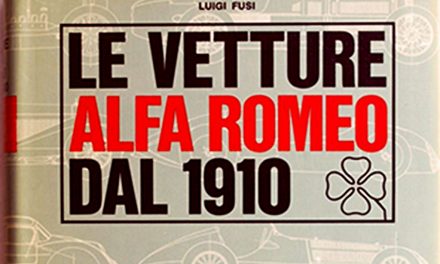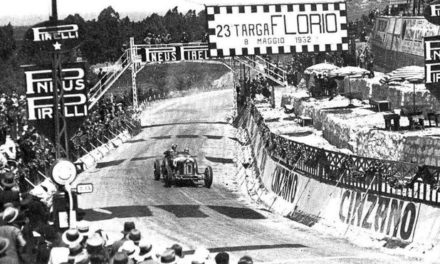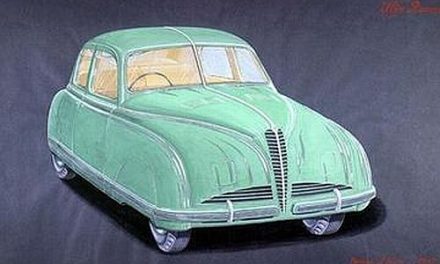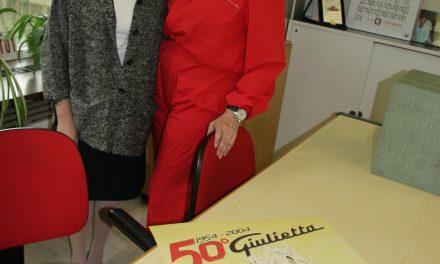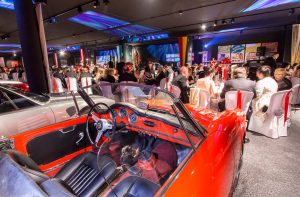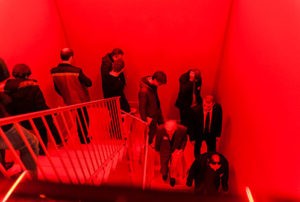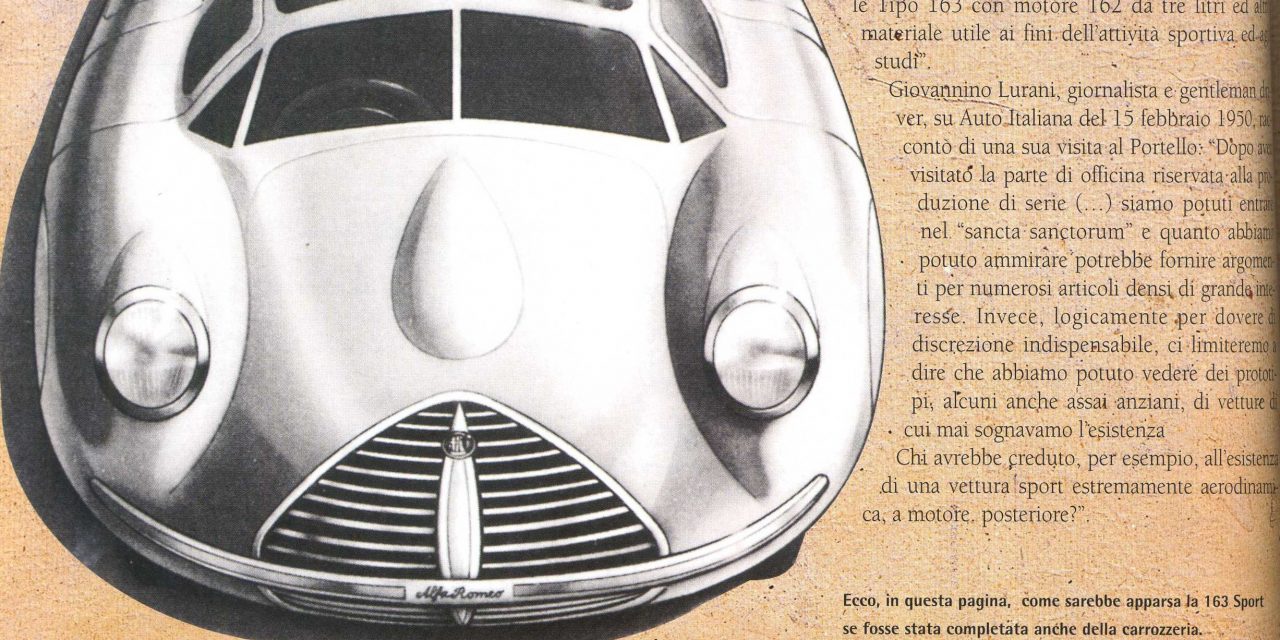
Ricart and his team designed in 1941, the Tipo 163, a racing sedan for the Sport category with a 3-litre engine. The bodywork was closed with covered wheels to improve the aerodynamic effect. The engine was the one used for the Tipo 162, conceived by Ettore Pagani, chief designer of special projects, as shown in drawing no. 260 of 17.11.1938.
Without compressor and with 13 modifications made from this date until July 24, 1941, the engine was adapted to the new chassis with side members by positioning it in the central rear area. The front suspension had independent wheels with longitudinal torsion bars and rear suspension with De Dion axle. One of the new features was the use of the hydraulic gearbox control with the lever located on the dashboard. The production projects for this model also included the assembly of a 12-cylinder derived from the S10 prototype, only for small series production for sports customers.
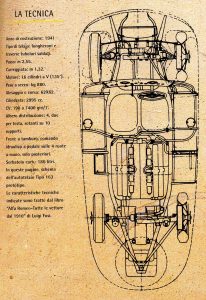
The construction drawings of the chassis are by Gioachino Colombo (the technician who, ousted by the arrival of Ricart, ended up passing definitively to Ferrari) who also signs those of the bodywork, entirely in elektron sheet metal, thus proving to be also an incredible stylist. Colombo imagined an absolutely innovative car that broke with traditional schemes, assuming lines that only today seem familiar to us.
Starting from the drawings preserved in the Alfa Romeo Historical Archive, we show you an unpublished "visualization" of the 163 created by the Dutch designer Rens Biesma and published in 2001 in La Manovella, the official magazine of the ASI.
For Ricart this car was a challenge reminiscent, for courage, of the Alfa Romeo Ricotti, nicknamed "Siluro", built by the Milanese coachbuilder Castagna in 1914, for Count Ricotti.
Too bad this car was just a dream. According to the memories of a Gioachino Colombo's collaborator, the car was completed in part, and only for experimental purposes, to ascertain the validity of the assembly of the main details. It was never completely finished.
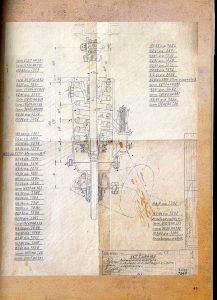
In fact, the production report dated April 1943 lists only a few parts made in detail: 10 supports for front suspension and 5 for rear suspension, 1 oil tank, 40 parts for frame, 1 dashboard, 3 wheel support columns, 8 shelves for water radiator support, 8 front side members extensions, 4 oil drain pipes from the gearbox to the cylinders, 4 battery support frames, 10 shelves for rear cover connection, 10 water outlet pipes from the cylinders. A type 512 gearbox had also been modified and fitted. Two months later, the 163 appeared in a list of experimental orders as a racing car to be built together with type 512 cars.
In December 1945 it still appears in a separate list of existing experimental racing and sports cars and is described as follows: "type 163 car, internal drive, incomplete and waiting to be completed, in storage in Orta (one of the decentrals set up to escape the bombing of Milan). This is the last document available in the Archive on Type 163. This prototype was never mentioned again except sporadically in some automotive magazine.
On Auto Moto Avio of 31 March 1946, in an article entitled: "Racing and the currently efficient racing material" Giovanni Canestrini wrote:
"The Alfa Romeo racing fleet includes 6 cars of type 158 with in-line 8-cylinder engines. These cars built in 1937-1938 have a 58-70 engine that originally developed 195 horsepower at 7000 rpm. It can be considered that through subsequent modifications it reached 240 horsepower. The same Alfa Romeo has then an experimental chassis 158 D, two 12-cylinder cars without compressor (type 412), two 1938 Mille Miglia 1938 8-cylinder cars of 2900 displacement, an 8-cylinder spider of the same type, an experimental 163 type 16-cylinder car with 162 three-litre engine and other material useful for sports activities and studies".
Giovannino Lurani, journalist and gentleman driver, on Auto Italiana on February 15, 1950, told of a visit to Portello: "after visiting the part of the workshop reserved for mass production we were able to enter the "sancta sanctorum" and what we were able to admire could provide arguments for numerous dense articles of great interest. On the contrary, logically, out of a duty of indispensable discretion, we will limit ourselves to say that we have been able to see some prototypes, some even very old ones of cars whose existence we never dreamed of.
Who would have believed, for example, the existence of an extremely aerodynamic, rear-engined sports car?
Type 163, little or nothing has been written. Only Griffith Borgeson, in his book "Alfa Romeo Tradition", published in 1990, outlines the figure of Ricart in depth and dwells more than the others on the "lost" 163.
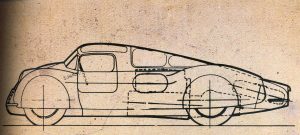
The car was actually believed to have been "found" in August 1978 when Quattroruote magazine published a letter from a Milanese reader who wrote that he had read in an English newspaper that a mid-engined racing car had been found in Northern Ireland that could have been the Alfa Tipo 163, by the Spanish designer.
But was it really? The editorial staff of the magazine replied that, although very similar, the car found was not the Type 163 because it was very different both in the bodywork and in the mechanical parts. They also pointed out that Luigi Fusi, Alfa Romeo's historian, when asked about the matter, believed that it was a handcrafted elaboration and excluded any relation with Ricart's Tipo 163.
Two years later, precisely on nr. 294 of May 1980, Quattroruote returned to the subject by answering another reader of Laveno who asked the same question, providing more detailed news.
The car found, he said, was designed and built during the war by two brothers from Rijeka, Gino and Oscar Jankovits, both students, one of engineering and the other of architecture. It had taken them four years to put it together, using the engine gearbox of an Alfa Romeo 6C 2300 from 1934. The engine was housed at the rear like the Type 163 but unlike the 163 it was centrally driven. The line was graceful despite the imposing tail.
The bodywork, open, was aerodynamic. Mysterious instead was the origin of the chassis that, for quality, almost suggested an intervention by Alfa Romeo itself. Once finished, the car was also registered with 2757 FM plate.
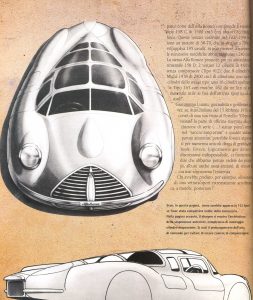
When Fiume was occupied the two brothers, fearing the confiscation of the car, took it to Trieste where they agreed to sell it to an American officer who transferred it to the United States and there it was displayed at the Vintage Car Store in New York. Later, it was bought by an English classic car dealer and ended up in Northern Ireland. In 2001, I learned that the car was in Italy.
Luigi Fusi went to see the two brothers and got the picture you see from them. It is immediately evident that it is another car even if there is some affinity with the Type 163. But it's just an extraordinary resemblance.
Returning to Ricart, it must be said that his period in Alfa Romeo coincided with a dramatic historical moment; but his intelligence and his ability to accomplish, together with those of his collaborators and supported by the "mind" of Alfa, the engineer Ugo Gobbato, knew how to react to the destruction of the war, casting a hopeful glance towards the future, that future which would see much of what had been thought but which, then, had not been possible to produce.

